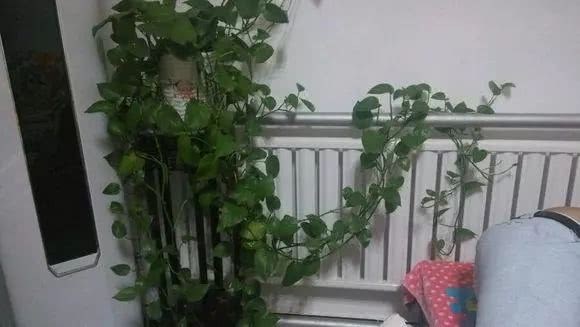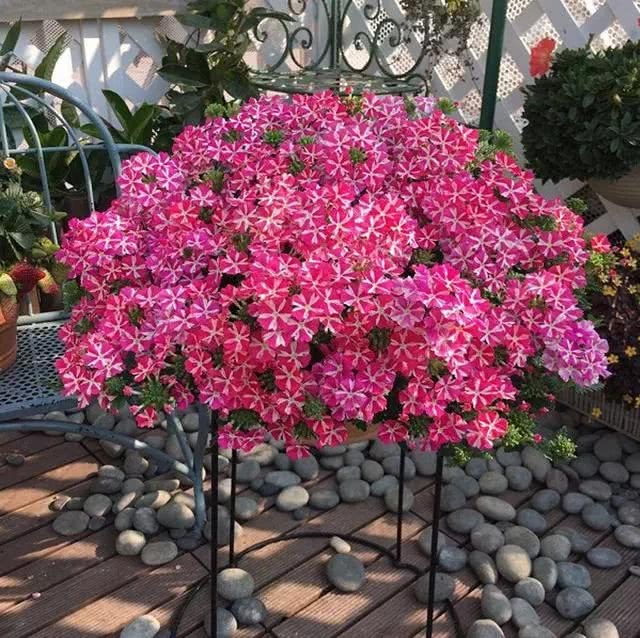It is not difficult for azaleas to blossom in such a way that they can bloom for more than 30 days.

Rhododendron, alias Yingshanhong, rhododendron, rhododendron, rhododendron and so on. Sex likes cool, moist, ventilated and half-yin and half-yang environment. Like light, avoid scorching sun exposure, afraid of cold, avoid thick fat, can not bear stagnant water. The suitable temperature for growth is 12-25 ℃, and the growth is slow or semi-dormant when the temperature is more than 30 ℃. It is suitable for loose and fertile acidic soil and avoid alkaline soil. Spring cuckoo blossoms in early April and summer cuckoo blossoms in mid-June. The methods of propagation can be cuttings, striping, grafting, splitting and sowing, and all can be propagated.
Cultivation tips: potted rhododendron varieties are Sihaibo, cold peony, crown, five treasure beads, peach (also known as Holland). Choose robust seedlings propagated by cutting or high pressure, and it is appropriate to use mud basin. In the basin soil, humus soil under coniferous trees is mixed with a small amount of garden soil and sand, and then bone powder is added, or 4 parts of rotten leaf soil under broad-leaved trees, 4 parts of rotten barnyard manure and 2 parts of sand are mixed evenly, and appropriate amount of sulfur powder is added to make the soil acidic and apply basic fertilizer. the size of the basin should be appropriate to the size of the plant, the basin is too large to cause the soil to be too wet and rotten roots, and the bottom of the basin is covered with tiles to facilitate drainage. The seedlings should be compacted around the pot. After that, the immersion basin irrigation method is used to pour water through. Keep the basin soil moist during the growth period. It is best to store tap water in a tank for 1-2 days and place it in a ventilated and shaded place. Place the balcony in a ventilated and half-shaded place after 10-12 days.
Keep warm in winter and have faint light and ventilation room. Watering during the growth period is very important, according to the dry and wet basin soil, appropriate watering, watering thoroughly, can not pour half-cut water. If you water too much, the leaves will fall and even die. Flower buds germinate in spring, watering a little more to ensure sufficient moisture. When the flower bud develops color, irrigate the water at least once a day, avoid dehydration; water once in the morning and evening in summer, the amount of water should not be too much. Before and after noon every day, spray water on the leaf surface and the ground to increase air humidity, reduce leaf water evaporation, and pay attention to shade; after entering autumn, the amount of water is reduced, watering once every morning to keep moist, do not be too dry or too wet, to prevent falling leaves. Winter (December to February) indoor overwintering, not more watering, every 3-4 days, depending on the basin soil drying condition in the morning to 3 pm in the sun, appropriate watering, keep the basin soil moist; during the growth period, grasp the frequent application of thin fertilizer, it is better to dilute mature cake fertilizer, do not apply thick fertilizer. In early spring, more fertilizer should be applied before and after flowering, and the dilute liquid fertilizer composed of dilute available nitrogen and phosphorus combined with phosphorus should be applied every 7 to 10 days to make it grow more branches and leaves and create conditions for pregnant buds. From June to July, the application of phosphate-rich liquid fertilizer (bone powder, potassium dihydrogen phosphate, etc.) promoted flower bud differentiation. Stop fertilizing at the height of summer.
Phosphorus and potassium fertilizer should be applied frequently (once a week) in autumn, and fresh water should be irrigated once the next day after fertilization. Stop fertilizing in winter and rainy season. For 1-2-year-old seedlings, it is necessary to apply less or no fertilizer, otherwise it is easy to cause "fertilizer damage". After timely shaping and pruning, there are usually 1-4 buds on the top of the plant after autumn, which must be thinned before flowering, only 1 bud of one branch is left, and the rest are sparse.
After spring, the bud takes off the scales, and if it is found that there are 2-4 flowers in the bract, only 1-2 should be left to concentrate nutrients and make the flowers large and beautiful. In addition, after growing up, mainly cut off diseased branches, weak branches, mainly thinning. If the basin soil is not alkalized, it is not necessary to turn the basin year after year.
Rhododendron is vulnerable to diseases and insect pests such as red spider, shell insect and brown spot, so it should be controlled in time.
Common maintenance techniques of potted rhododendron
What about the lodging of terminal buds of rhododendron seedlings after potting?
Rescue method: pour enough water on the basin, put it in the shaded outdoor open-air maintenance, avoid sun exposure and fertilization. Before and after noon every day, spray water on the leaf surface twice to reduce the evaporation of water on the leaf surface, and then water the basin when it is dry. In this way, after about 2 weeks of "basin", the top twigs and leaves will gradually stand up. After that, it is transferred to the normal maintenance management in the semi-shade.
What if the summer cuckoo has buds but does not blossom?
Some people in the cultivation of summer cuckoo due to improper management, although gave birth to a lot of buds, but when the spring flowers bloom, but suddenly grow new buds and do not blossom. What is the reason for this? This phenomenon is called withered bud. The reason for the withered buds of summer cuckoos is that the indoor temperature is too high in winter, and the excessive growth of branches and leaves competes with the buds for nutrition, so that the buds can not blossom due to lack of nutrition. Rescue method: summer cuckoo has strong cold resistance and can safely survive the winter outdoors in East China, allowing it to sleep naturally and prevent branches and leaves from growing. Apply a thin fertilizer dominated by phosphate fertilizer, such as superphosphate, before flowering, and then you can produce brightly colored azaleas.
Why does the bud of rhododendron not blossom and become a leaf?
When the flower bud of rhododendron is formed, the flower bud differentiation stage must be carried out first. at this stage, phosphorus-based fertilizer must be added, otherwise when the bud grows, it looks like a bud, but it is actually a leaf bud. Because the bud is enclosed in the leaf bud. When the phosphate fertilizer is insufficient, the bud enclosed in the leaf bud cannot be formed. Therefore, when the leaves are released the following year, there is no bud, which leads to the misunderstanding that the bud becomes a leaf.
What about the scorched leaves of rhododendron in the rainy season?
Rescue measures: quickly move to a cool, ventilated and semi-overcast outdoor for nursing. The basin soil should be watered in time, and more water should be sprinkled on the leaf surface at ordinary times, and the environmental humidity should be increased. Stop fertilizing. Through careful nursing, the condition will get better.
What about the orange coke of rhododendron leaves in summer?
The sun is exposed. Cuckoos like semi-overcast environment, especially in midsummer, potted cuckoos should be placed under the shade to prevent sunburn. It's not watered properly. The basin soil should not be too dry or too wet. We should also pay attention to leaf water spraying and ground water spraying to increase humidity and cool down. Give a person thick fertilizer or raw fertilizer. The root system of rhododendron is thin and weak, and its fertilizer absorption is poor. After applying thick fertilizer and raw fertilizer, it will burn the root system and cause leaf tip or leaf scorch. Drug damage. When cuckoos have diseases and insects, the concentration of spraying chemicals is too high, resulting in drug damage.
Rescue method: if the leaves are scorched and scorched caused by drug damage, put the cuckoo in the semi-shady open air, increase the number of times of spraying water on the leaves, and suspend fertilization, so that leaves can grow again on the branches; if it is caused by fertilizer damage and the time is not long, it can also be saved by "enema" (washing with flood) or changing the basin soil in time.
Why potted rhododendrons should not often loosen the soil
Potted rhododendron is a shallow-rooted plant with thin and crisp roots. When loosening the soil, it is easy to damage the roots and affect the growth. For the conservation of azaleas, you can put a few broken tiles on the root soil to prevent topsoil erosion; when the roots are exposed on the soil, you can add some loose soil to cover the roots.
How should summer cuckoos spend the winter and summer
Summer cuckoos are more hardy. When summer cuckoos are cultivated in eastern China, they generally spend the winter outdoors in the open air and let them sleep naturally, which can prevent them from growing branches and leaves and causing withered buds. If you spend the winter indoors, it often results in only buds but no blossoms and only new branches and leaves. In summer, proper shading should be provided to avoid zooming the leaves due to scorching sun, and pay attention to frequent water on the leaves and increase the humidity of the surrounding environment.
How to make rhododendron blossom
Growing environment. Cuckoos like cool and humid climate, which is very suitable for half-yin and half-yang environment. Avoid the scorching sun, and avoid too much shade. Soil and water quality. Cuckoos like acidic soils with good drainage and rich humus.
The requirement of soil pH value is 5.5-7.0. The water quality of watering should be non-alkaline. If tap water is used, it is best to store it for 1-2 days before using it. Fertilize. After entering the midsummer, fertilizer should be stopped to make it safe through summer and conducive to flower bud differentiation; fertilizer mainly based on phosphate fertilizer should be applied every 10 days or so during flower bud differentiation and budding stage; attention should be paid to the frequent application of thin fertilizer during the growing period; two times of phosphate fertilizer should be applied twice before flowering and two times of mixed fertilizer should be applied after flowering. Pest control. In the high temperature f dry season, red spiders and military insects do serious harm to rhododendron, which will make the leaves yellow and fall off. Brown spot is a common disease of rhododendron.
These diseases and insect pests should be controlled by spraying relevant chemicals in time.
How to delay the flowering of rhododendron
If the cuckoo wants to bloom after the natural flowering period, it can be cultured in a low greenhouse of 1: 3 ℃ before the bud blooms. It is only given weak light for 3 to 4 hours a day, and the pot soil is slightly moist. It can generally be stored until September to October. Take it out 15-20 days before the date of flowering, preferably after 5pm or before 8am. After taking it out, keep it in a shady, cool, windproof place and spray the plant frequently. After 4 or 5 days of revival, make it a little sunny, or apply some thin fertilizer, so that it can blossom.
What is the reason why the leaves of rhododendron change from green to red
The growth period of most rhododendrons is from early summer to early autumn. When plants enter winter dormancy, glucose and other nutrients accumulated in leaves appear red after low temperature stimulation. When the flowers are warm in spring in the second year, the leaves of azaleas change from red to green again.
Especially for some summer cuckoos with small leaves, the leaves begin to turn red after autumn, and even more so in winter. There are also some semi-evergreen rhododendrons, such as spring rhododendron and summer rhododendron, all the conservation and management are very normal, but after the leaves turn red in winter, some leaves change from red to yellow and then fall off gradually. these are normal metabolic physiological phenomena of plants.
How to make a variety of colors of azaleas bloom on a plant
In order to make a rhododendron blossom in different colors, it can be realized by grafting. Scion selection. The scion took one-year-old, sturdy and lignified or semi-lignified twigs (flower type, florescence, leaf color, leaf shape, similar growth potential varieties), left 3 or 4 top leaves, cut off half of the leaves, and the base was cut into a wedge. Rootstock selection. The rootstock can choose the 3-year-old and robust rhododendron to split the shoots. Take the branches of the same year, remove the top bud with a grafting knife, and cut a knife straight in the middle, with a depth of about 1.5 cm. Grafting. Insert the scion into the cutting part of the rootstock, aim at each other at the cambium, fasten the joint with plastic tape, put on the plastic bag, and fasten the pocket. Using the same method, other colors of cuckoo scions were grafted on other branches of the rootstock. Careful maintenance. After grafting, the plant was placed in a semi-shady place for maintenance.
After the grafting survived, remove the plastic bag and enter into normal maintenance. When it blossoms, it will produce azaleas of different colors on a plant.
Cuckoos can be used not only for viewing, but also for medicinal purposes. But it is worth noting that the rhododendron (yellow flower) in rhododendron is poisonous and absolutely cannot be eaten. Its flowers, leaves and roots can be used medicinally. In addition, rhododendron has strong resistance to carbon dioxide, sulfur dioxide and carbon monoxide in the air. It is also sensitive to ammonia and can be used as an indicator plant for monitoring ammonia.
Today's trick, big sister, share:
[mangosteen is good or not, you can see it here. It is so easy to learn this skill to choose mangosteen.]
More tricks, please pay attention to the tricks, sister!
? END?
Thank you for your reading and fans for your attention.
If you think the article is good, show it to your friend.
Don't forget to give me a like.
Reply: plant name (such as fortune tree): view the culture method
- Prev

One leaf in the soil can change 100 pots of these five kinds of flowers.
People who like to take care of flowers and plants in daily life all know that some flowers are easy to feed, and you can have a small surprise with a little care. Come and see who those flowers and grass are. 1. Green Luo Luo is a seeded player in the world of exploding pots.
- Next

This flowering period is more than half a year. The peculiar flower pattern is better than the green pineapple. The hotter the weather, the more beautiful the flower.
The flower I share with you today is Beautiful Sakura. Beautiful cherry is born to like sunshine and is not tolerant to shade. In terms of temperature, it prefers high temperature weather. Even in hot summer, Sakura can blossom well and be loose and fat.
Related
- Wuhan Hospital Iron Tree Blooming Result Was Instantly Frightened by the Gardener Master
- Which variety of camellia is the most fragrant and best? Which one do you like best?
- What is the small blue coat, the breeding methods and matters needing attention of the succulent plant
- Dormancy time and maintenance management of succulent plants during dormancy
- Minas succulent how to raise, Minas succulent plant pictures
- What are the varieties of winter succulent plants
- How to raise succulent plants in twelve rolls? let's take a look at some experience of breeding twelve rolls.
- Attention should be paid to water control for succulent plants during dormant period (winter and summer)
- Watering experience of twelve rolls of succulent plants
- Techniques for fertilizing succulent plants. An article will let you know how to fertilize succulent plants.

